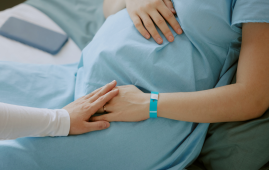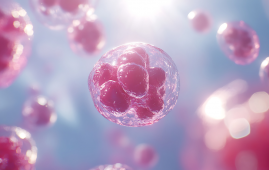

Professor Dale Nyholt of QUT and Ph.D. candidate Rafiqul Islam of QUT describe using large-scale genome-wide associations studies (GWAS) summary statistics to examine hundreds of thousands of human genomes from headache and migraine sufferers and non-sufferers in a study that was published in the journal Human Genetics. The study revealed that there is a genetic link between migraine and blood sugar levels.
The co-occurrence of migraine and glycaemic (blood sugar level) features had been noted in observational epidemiological studies, but Professor Nyholt of the QUT Center for Genomics and Personalized Health said it remained unclear how they were genetically connected.
“About 15% of the global population is affected by migraine, and as far back as 1935, migraine was described as a ‘glycemic headache,'” Professor Nyholt said.
“Glycemic traits such as insulin resistance, hyperinsulinemia (too much insulin), hypoglycemia (low blood sugar level), and type 2 diabetes are associated with migraine and headache.
“By identifying genetic correlations and shared loci and genes in our analyses we have inferred causal association and thus confirmed and improved understanding of the relationship between migraine, headache, and glycemic traits.”
Mr. Islam said the researchers performed cross-trait analyses to estimate genetic correlation, identify shared genomic regions, loci, genes, and pathways, and then tested for causal relationships.
“Out of the nine glycemic traits we looked at, we found a significant genetic correlation for fasting insulin (blood insulin level) and glycated hemoglobin with both migraine and headache, while two-hour glucose was genetically correlated only with migraine,” he said.
“We also found regions harboring genetic risk factors shared between migraine and fasting insulin, fasting glucose, and glycated hemoglobin, and for headache, shared regions with glucose, fasting insulin, glycated hemoglobin, and fasting proinsulin.
“Further analyses produced evidence for a causal relationship between migraine and headache with multiple glycemic traits.
“Our findings provide avenues to develop novel treatment strategies for managing glycemic traits in migraine and headache patients, particularly increasing fasting proinsulin level to protect against headache.”
The link between migraine and blood sugar levels will help come up with new treatments and strategies do beat the condition in chronic patients.
more recommended stories
 Coffee and Cognitive Function: Evidence Review
Coffee and Cognitive Function: Evidence ReviewA new narrative review in Cureus.
 World Summit Outlines Core Principles for Healthy Longevity
World Summit Outlines Core Principles for Healthy LongevityWhy Healthy Longevity Demands a New.
 Colorectal Cancer Screening Rates Low in Adults 45–49
Colorectal Cancer Screening Rates Low in Adults 45–49Recent UCLA research reveals that colorectal.
 Gut Immune Cells and Long-Lasting Antiviral Protection.
Gut Immune Cells and Long-Lasting Antiviral Protection.Breakthrough Findings on How Gut Immune.
 Mild Pancreatic Duct Dilatation Signals Higher Cancer Risk
Mild Pancreatic Duct Dilatation Signals Higher Cancer RiskEarly Structural Changes Offer Critical Clues.
 How the Uterus Senses Force During Labor: New Insights
How the Uterus Senses Force During Labor: New InsightsA new study published in Science.
 Fat-Free Mass and Brain Outcomes in Preterm Babies
Fat-Free Mass and Brain Outcomes in Preterm BabiesEarly Fat-Free Mass May Hold the.
 How Hormones Shape Dopamine-Driven Learning
How Hormones Shape Dopamine-Driven LearningNYU Study on Hormones and Cognitive.
 Protein Pair Guides Chromosome Alignment in Mitosis
Protein Pair Guides Chromosome Alignment in MitosisKey Points A joint research team.
 Ultra-Processed Foods in Mediterranean Youth: Risks
Ultra-Processed Foods in Mediterranean Youth: RisksThe Mediterranean region is widely recognized.

Leave a Comment